The Power of Charcoal Art: Telling Stories Without Words
Kaasvi Jain
April 7, 2025
Against All Odds
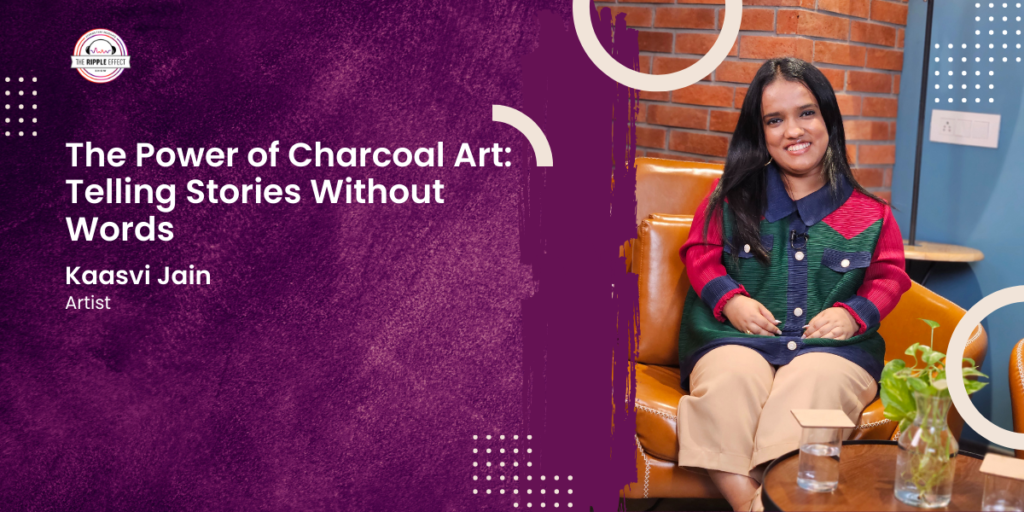
A language that transcends over time, language and culture is art. It can evoke emotions, move individuals and narrate stories that words cannot always fully convey. Charcoal art has been more than a creative outlet for me; it has been a way of expressing feelings, opinions and experiences in a manner that many find extremely relatable.
I have tried the pure intensity that graphite brings as an artist. All monochromatic drawings that tell a story seem intimate and vibrant, from the light and dark contrast to the smudges that give depth and the strokes that create expressions. Charcoal art employs tone, texture and composition to inspire emotions rather than color like brilliant paintings do.
Through my journey as an Indian charcoal artist, I have realized that art can be both deeply personal and universally relatable. Whether it’s a single portrait or an abstract composition, charcoal art stories speak louder than words.
Why Charcoal Art? The Unfiltered Essence of Expression
Charcoal art appealed to me among the various artistic mediums because it is honest and unvarnished. Working with a medium that just uses light and shadows has a profoundly poignant quality. Black and grey strokes are used to create stories in monochromatic drawing and the lack of color heightens the feelings that are conveyed.
I began as an Indian charcoal artist producing basic sketches, but I learned to use charcoal drawing techniques eventually to add depth to my art. One of the most personal paintings I’ve created, Balancing Act, describes the challenge of maintaining balance within life—among one’s desires, inner contradictions and those of society. With techniques of pencil and charcoal, I was able to emphasize the brittleness of balance while focusing on durability and strength.
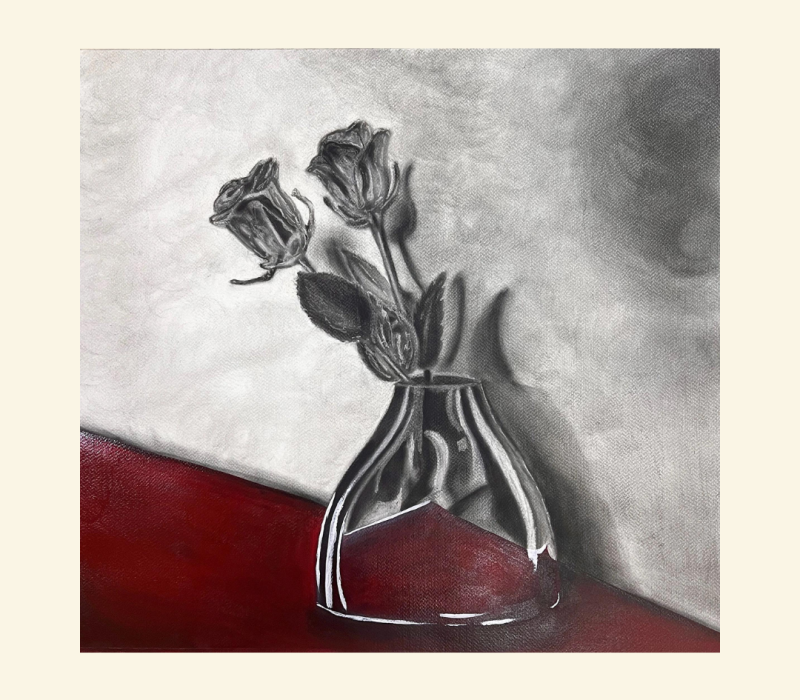


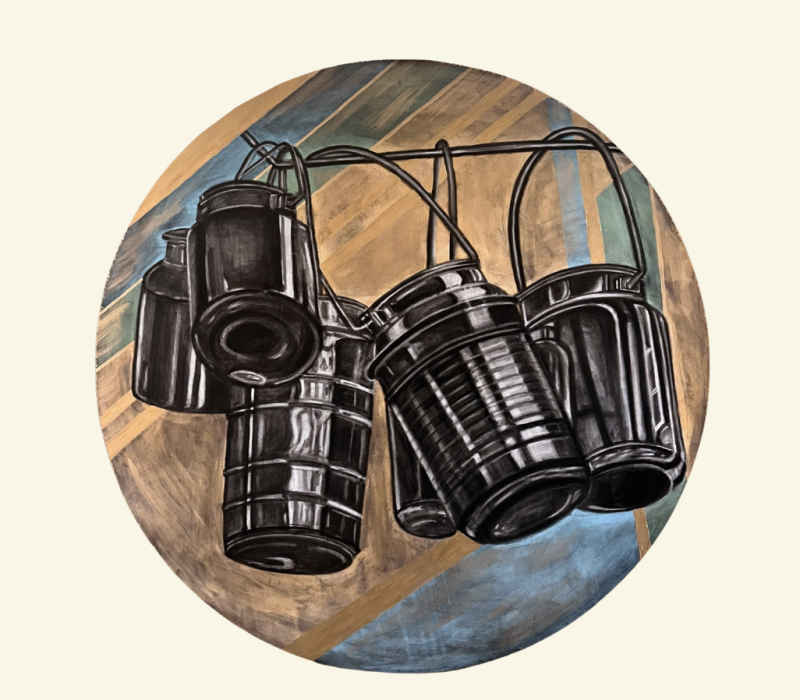
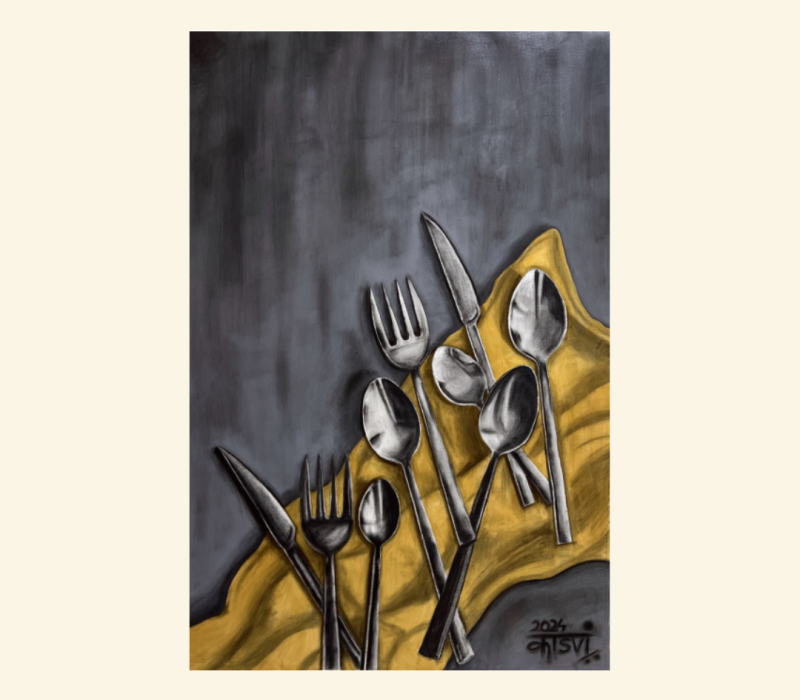
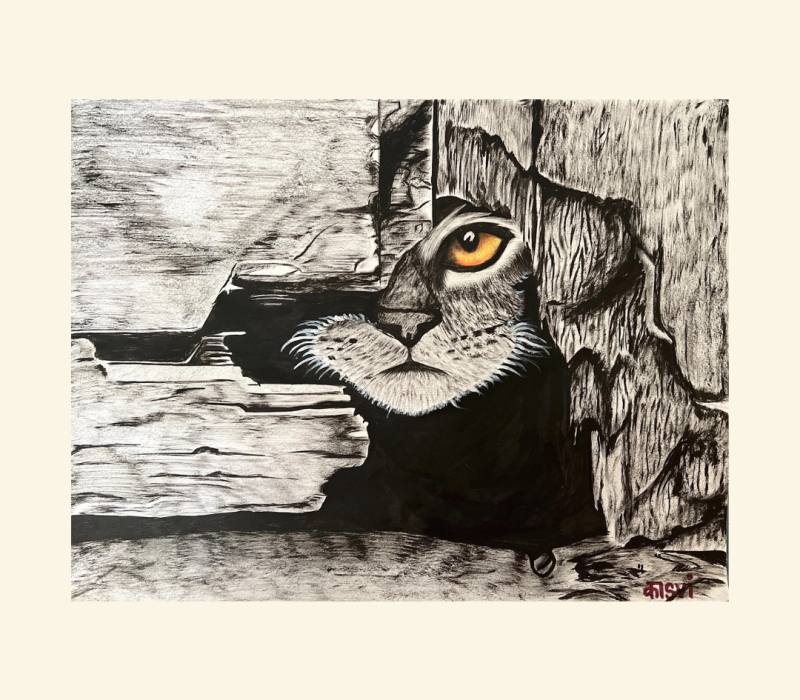
Graphite-style art provides me with the opportunity to express feelings, textures and expressions in a more natural manner than other mediums. Whether they are painting a portrait or an interesting piece of art, the attraction of hand-painted portrait artists through carbon drawing is their capacity to bring black and white to life.
The Silent Voice of Visual Art: When Words Aren’t Enough
Stories have been told through art for a long time. But what happens if a story is presented completely without any words? Wordless visual art can make individuals pause, reflect and feel emotions they may not even be able to put into words.
Everyday struggles, successes and genuine feelings are where I draw my inspiration from much of my artwork. Certain books that are some of my favorites, including Balancing Act, talk about self-discovery, strength and the struggles we endure internally on a day-to-day basis. Emotional handmade pieces of this nature hold great power as a viewer in being able to grasp and connect with it for themselves in some special way.
For me, every stroke of charcoal carries meaning. Whether I am creating conceptual art or engaged in detailed carbon drawing storytelling, I concentrate on evoking a feeling and not just producing a visually stunning picture.
Mastering the Charcoal Drawing Techniques
I have learned, over the years, that it is as much a matter of understanding emotions as mastering the medium to achieve mastery in charcoal drawing. Every technique I use helps in bringing depth, realism and storytelling to my artworks. Some of the key techniques that I often incorporate include:
1- Layering & Blending
Graphite-style painting is one of the most versatile mediums when it comes to layering. I can provide depth and smooth transitions to my subjects by using and mixing multiple layers of graphite, which makes them appear more real.
2- Underlining with an Eraser
As important as graphite itself is a good working eraser! I am able to put in highlights that provide the composition with depth and contrast by erasing small portions of the painting. This is particularly useful when working on handmade portrait artists pieces where facial highlights can enhance expressions.
3- Utilizing Different Types
There are multiple kinds of it, consisting of compressed charcoal, vine charcoal and charcoal pencils. I use all these to achieve the right texture and depth in my work. Compressed charcoal is ideal for sharp lines and dark blacks, while vine charcoal helps create soft shading.
4- Smudging & Texture
In monochromatic drawing, smudging plays a vital role in achieving smooth gradations. In order to achieve the right degree of softness and texture in my artwork, I often blend stumps, tissue paper and even fingers.
I’ve managed to perfect my skill and create compelling monochromatic drawing stories that reach the viewer more intensely by being skilled in these methods.
Applying It as an Expression of Emotions
The ability to add emotion to each piece is one of the best rewards of being a charcoal artist. Making a connection between the piece and the viewer is the goal of handmade emotional art, not how things appear.
I focus a lot of my work on themes of tenacity, reflection and solitude. As an Indian charcoal artist, I mostly use real-world experiences as inspiration and utilize carbon drawing to convey sentiments that might be hard to verbalize.
I believe that old media such as black-and-white art remain very valuable in a world where digital art is becoming increasingly popular. Monochromatic drawing is eternal due to its imperfections, smudges and organic texture. A piece of art made by hand has a very personal quality, with every brushstroke carrying the emotion of the artist.
The Future of Charcoal Art: Keeping the Legacy Alive
Although art transforms with time, carbon drawing‘s fundamental qualities never shift. There is no questioning the tempting nature of traditional drawing, even in this era of digital technology. Monochromatic drawing is an incomparable experience due to its tactile nature, the physical act of smudging and shading and the fulfillment that arises from working with genuine supplies.
My objective while being an artist is to stretch the limits of storytelling using carbon drawing while investigating novel topics and sentiments. I hope to encourage more artists to try out different pencil and charcoal techniques so they can use this lovely medium to create unique narratives.
Whether you are an aspiring artist or someone who simply appreciates the depth of charcoal art stories, I hope my work speaks to you in a way that words never could. After all, the most powerful stories are often the ones left unspoken—told only through the silent strokes of an artist’s hand.
Final Thoughts
Art is about connection. It is about feeling something beyond the physical form. I can now convey feelings that are both extremely personal and broadly understood via charcoal art. My goal is to use my creativity to make a place where people are able to express tales of their own, discover their own significance and realize that they belong.
If the realm of storytelling using carbon drawing speaks to you, I recommend you to delve deeper, practice and allow it to become your voice. Because sometimes all that is needed to convey the most profound things in life is a canvas, a piece of graphite and the bravery to speak what cannot be said.
Share This :


